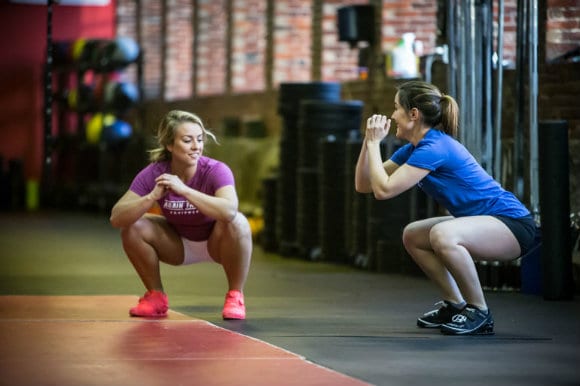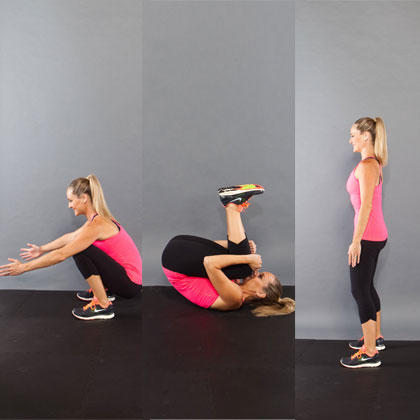Rock Up
It is wrong to think that leg day is a hellish day characterized by endless sets of barbell squats.
In fact, we have numerous options when it comes to using the squat movement to train.
We can train with weights, or free body. We can work with both legs, or focus on single leg movements.
The rock-up squat is a very interesting variation of the bodyweight squat: both for the dynamism it can express, and because it allows to improve back flexibility and, at the same time, to work the legs, buttocks and core. It can be done bodyweight, or with the help of a weight - a disc or a kettlebell.
The rock-up squat can be considered a ballistic, or swinging exercise: and if the basic technique belongs to the domain of bodyweight exercises, the use of weights allows us to simplify the learning phase, or to make the movement more stimulating.
The muscles involved in performing the rock-up squat are the quadriceps, glutes, and oblique abdominals. Secondly, upper and lower abdominals, hamstrings and calves are affected.

execution
The rock-up squat is performed with a soft surface behind the shoulders, such as a mat.
- From a standing position you squat down into the deepest position of a squat, and let yourself roll backwards, touching the mat with your buttocks first, and then with your back and shoulders.
- At this point, you have to get up - without using your hands - by kicking your legs forward and rolling to the starting position - eventually, your arms can be pushed forward to give you more momentum.
- The abdominals must be kept firmly contracted for the duration of the movement, especially to avoid falling badly on the seat or back: this part of the movement, in fact, very similar to that of a backward somersault, must be performed in a perfectly controlled manner.
As we learn the movement, then, a training partner's hand on the back can help us understand and control the movement.
At the beginning, especially, when we are not yet able to go back with the necessary decision, we can help by keeping a fairly light weight - like a 4 or 8 kg kettlebell - resting on the chest: the counterweight will help us get back up.

Common mistakes
There are two caveats to consider when performing the rock-up squat.
- If we are helping ourselves with a burden, when rolling on the ground, it must be in contact with the chest, to avoid that, during the movement, it comes to be dangerously close to the face.
- In the ascent phase, the weight must be moved away from the body, precisely to give us the necessary momentum to bring us back to an upright position.
(If you are interested in using the rock up squat as an element of a progression to get to the pistol squat, the progression is this: go down with two legs, go up with two; go down with two, go up with one; go down and up with one - this is a "rock up pistol", it's almost done!)
Conclusions
In rock up squat it then becomes a very useful ally in the progression that will lead us to learn the pistol squat, or single leg squats which, it is worth remembering, is one of the most useful bodyweight exercises worth doing.
The rock up squat teaches us the correct mechanism of the pistol squat, as well as how to manage the fear of "falling" backwards, teaching us the correct way to do it.


























